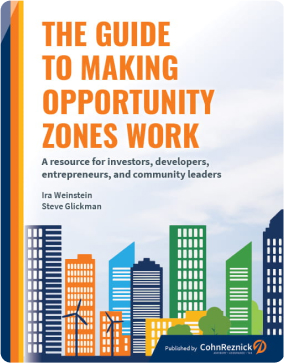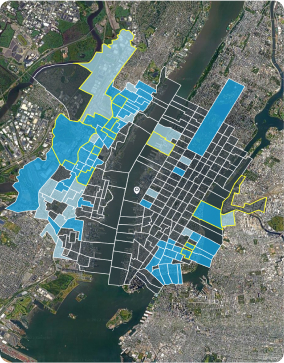Our solutions are tailored to each client’s strategic business drivers, technologies, corporate structure, and culture.

The Guide to Making Opportunity Zones Work

Interactive map: Opportunity Zones and New Market Tax Credits
Final Opportunity Zone regulations
After a long, challenging year of navigating through emerging regulations and controversy regarding Opportunity Zones, the Treasury released a third – and, for now, final – wave of OZ regulations in December 2019. These changes have far-reaching impact and need to be properly embedded into an organization’s OZ program strategy.
From a guidance perspective, we anticipate no forthcoming changes, which means we may finally be at the end of the beginning. Now we all can focus on moving forward quickly to develop impactful OZ program strategies.
Click below for our early, high-level perspectives on the third wave of regulations, and find deeper analysis and perspective in our OZ guide (see above).
The potential of impact investing
Signed into law through The Tax Cuts and Jobs Act (2017), sections 1400Z-1 and 1400Z-2 in the IRS Code created a new and dynamic community development program, opportunity zones. With trillions of dollars of unrealized capital gains across the U.S., the program provides a tax incentive for investors to re-invest such gains into Qualified Opportunity Funds dedicated to investing in government designated opportunity zones. Stimulating both individual and corporate investment in low-income communities within these zones across the U.S. and in U.S. territories, the expected capital formation and fund management platform created will be significant.
Closely aligned with this community development strategy, CohnReznick currently serves the types of organizations that are accumulating capital and managing the Opportunity Funds being formed. With a long and successful track record of servicing Private Equity, Venture Capital, Hedge Fund and Family Office organizations, we support the bridge between financial services and community development that will help deliver successful opportunity zone investments.
Explore an interactive map identifying where eligible census tracts are located >
Learn how opportunity zones provide tax benefits >
Sophisticated community development expertise
Our Opportunity Zone team includes national tax experts who analyze the details of legislative policy, transaction advisory experts who strategically analyze and model the practical effect of such policy, and experts who handle fund formation, accounting, and compliance. Additionally, our industry experts aligned with the opportunity zone business sectors (investees), such as real estate, renewable energy, hospitality, technology, life sciences, and manufacturing, will help us to ensure that this tax provision has maximum effect for the distressed communities it impacts.

New Markets Tax Credit Case Study Video Series

Ira Weinstein
Contact
Let’s start a conversation about your company’s strategic goals and vision for the future.
Please fill all required fields*
Please verify your information and check to see if all require fields have been filled in.







